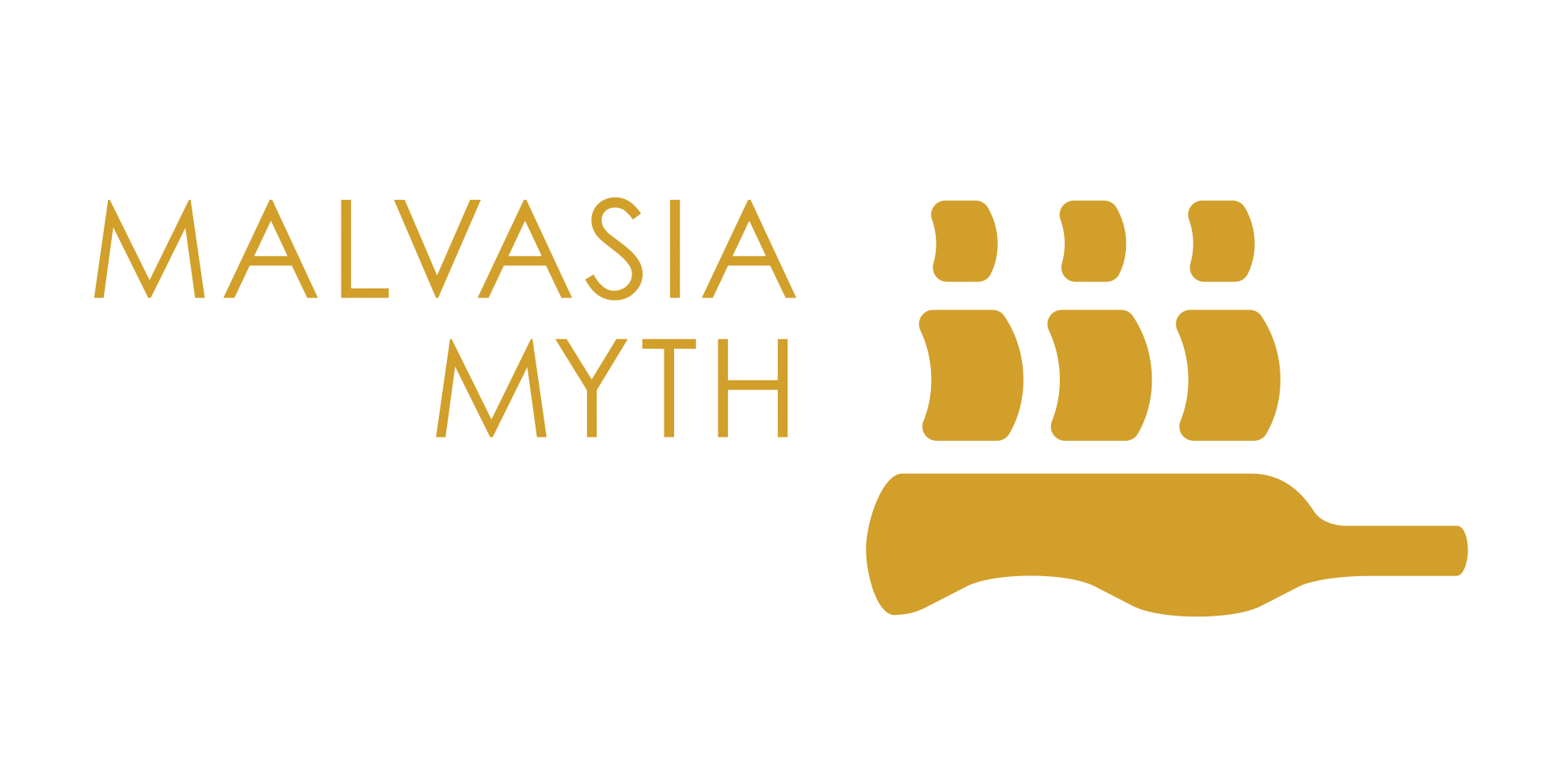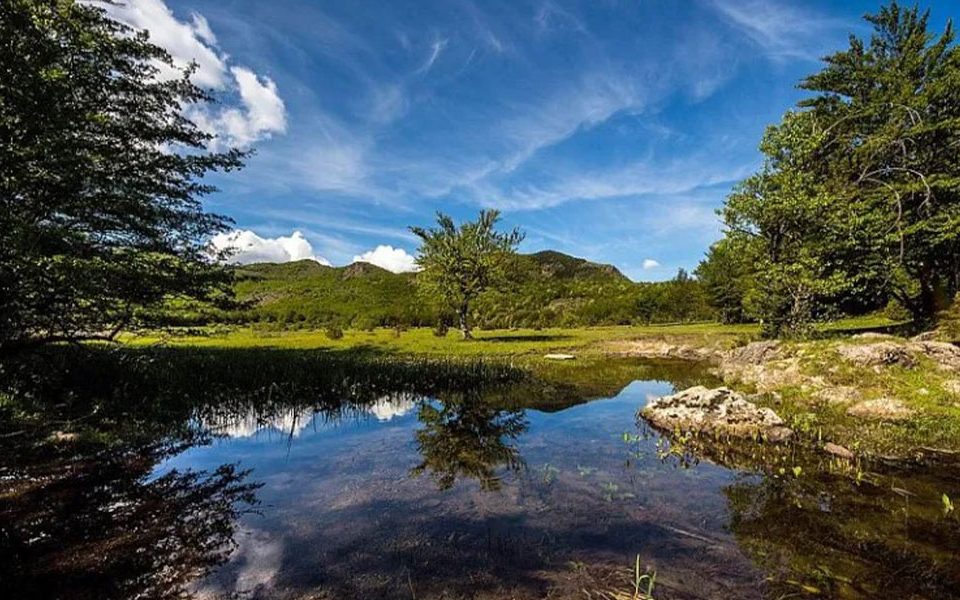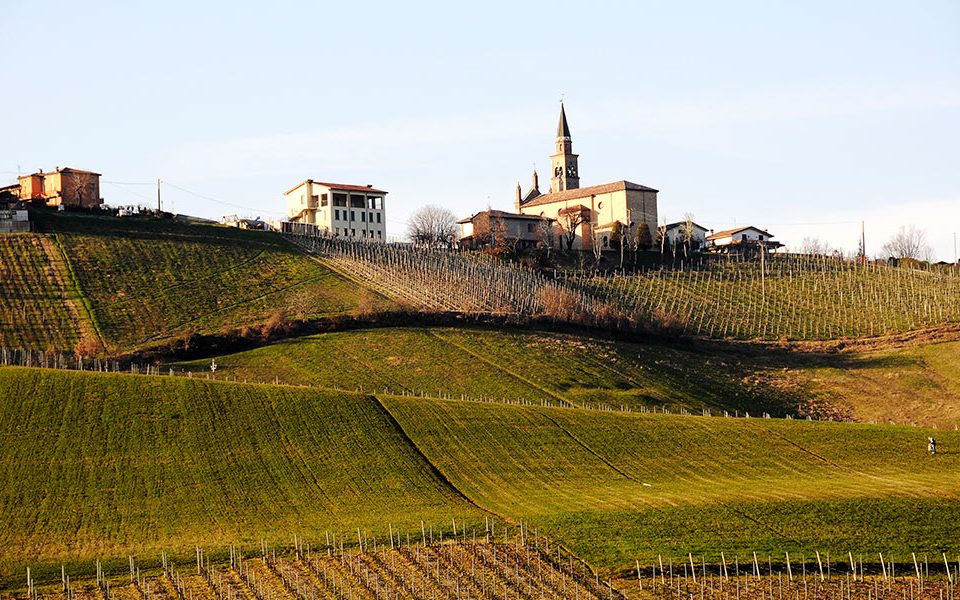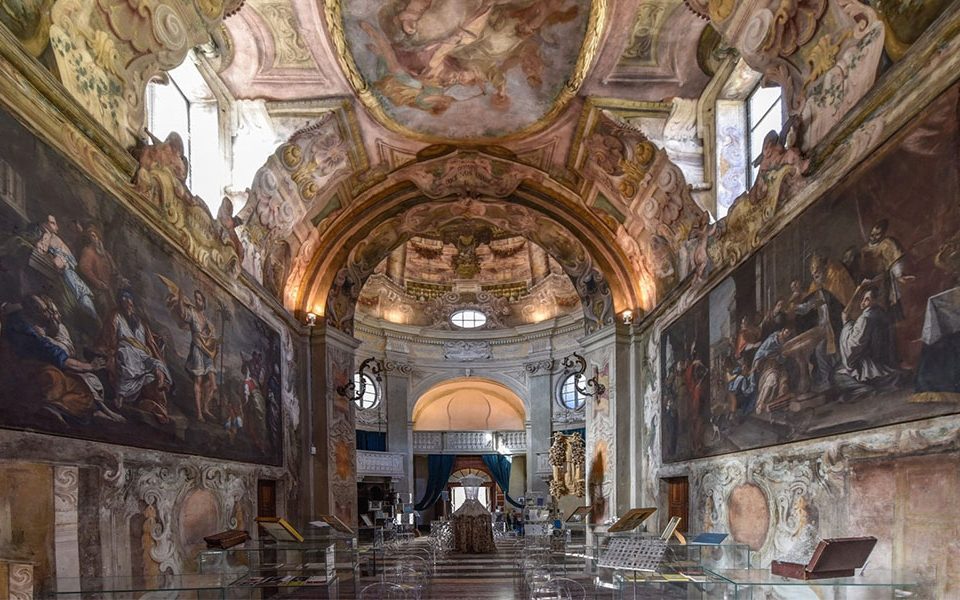From Val d’Enza to Val Parma
Parma, Italy
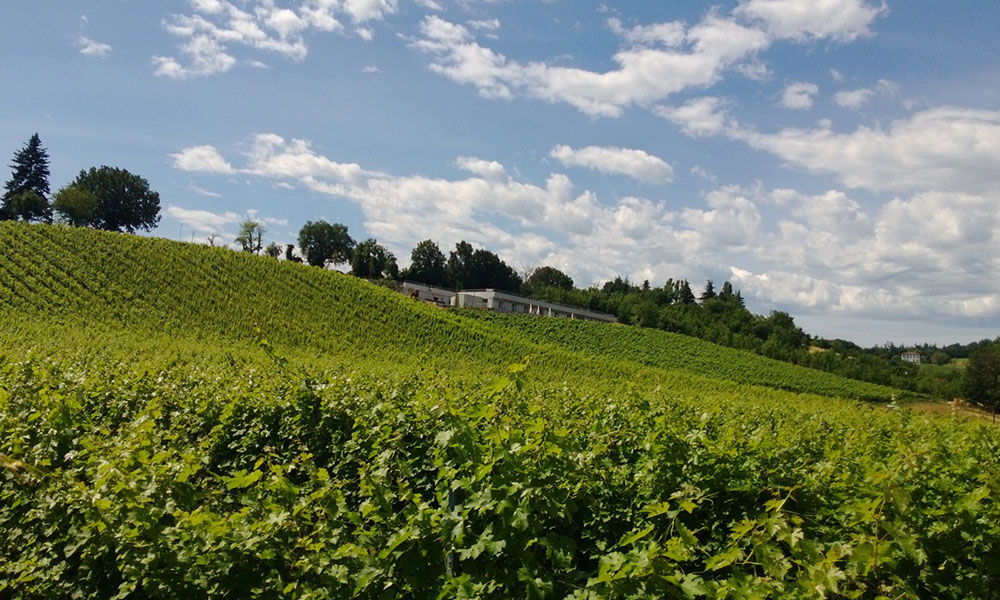
Malvasia, a glorious past
We go along the SP32 provincial road and in San Michele Tiorre we turn towards the hills along via Costa where you can admire the vineyards on both sides.
1.a.
Possible stop at the Donati Camillo farm (tastings) cellar that produces natural, organic wines. (44.668742, 10.253834).
1.b.
We continue to the town of Barbiano where we can admire the Malvasia vineyards of the Amadei Winery, (44.672430, 10.240813) whose singularity if the slope of the hill in tis location. The winery has its production site in Via Langhirano in Parma (farmhouse of the Amadei "Al Vigneto" winery with rooms).
Noteworthy are the Church of Santo Stefano Protomartire which stands on the remains of an ancient Romanesque parish church and a belvedere with a view over the entire valley.
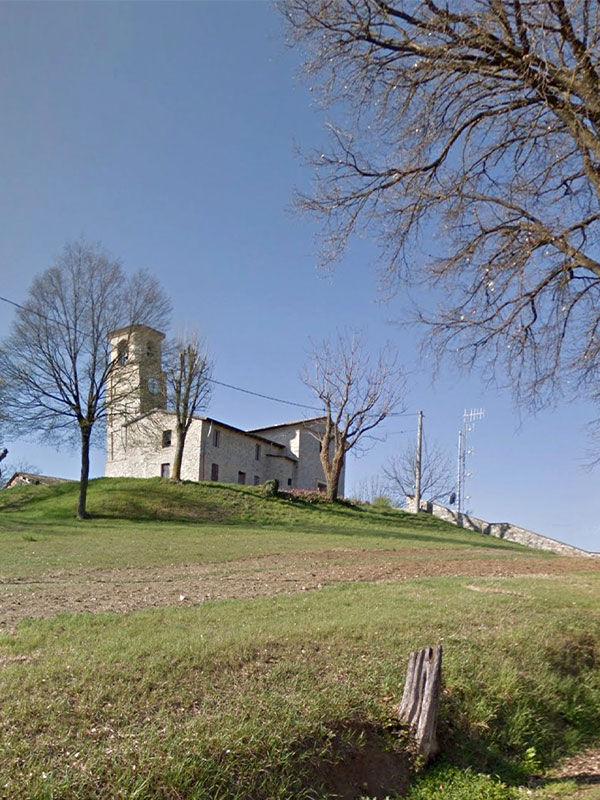
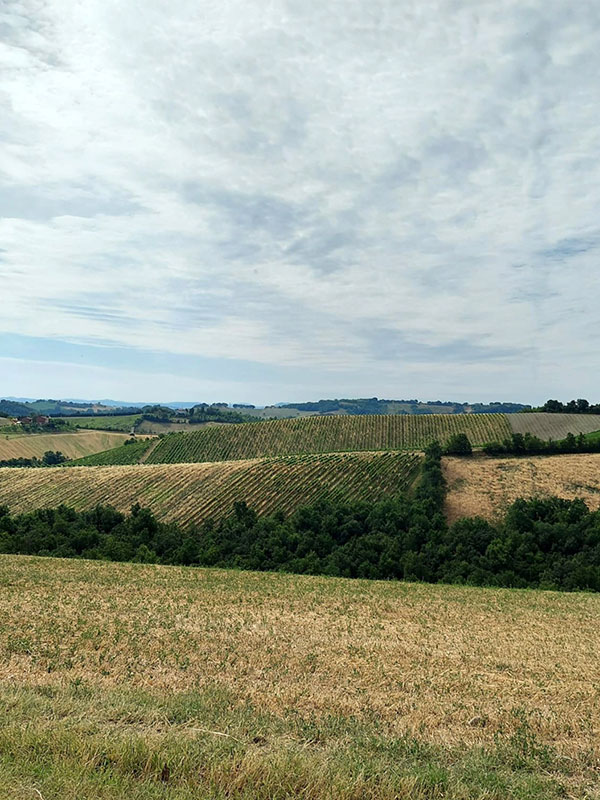
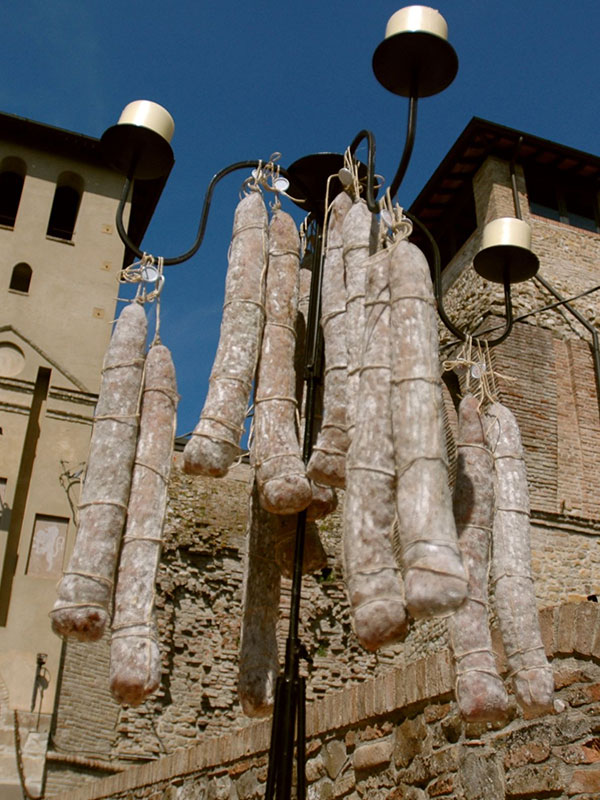
1.c.
Continuing along Via Riccò we reach the Castle of Felino. (44.684255, 10.236720). The first written evidence of the castle dates back to the year 1140 even if its origins are probably earlier. It reached its maximum splendor in the XIV century thanks to Pier Maria Rossi. Then came Ludovico il Moro, later the Sforza, the Farnese up to the Bishops of Parma and now it is privately owned.
The Salami of Felino Museum is located inside and is part of the circuit of the Food Museums of Parma. The exhibit unfolds inside the cellars and in the ancient kitchens. There is an important collection of tools that belonged to families of butchers and of historical evidence concerning the production of salami. It is possible to visit some rooms of the castle and relive the history of the fortified complex in the suggestive underground of San Pietro through projections and 3D models. We continue in the direction of Felino.
1.d.
At the corner with the road leading to the castle you can see a villa surrounded by a wall. It is villa Caumont Caimi called, for this reason, the Recinto (enclosure) of Felino. (44.692963, 10.243731). The family of Count Henri was an important one in the winemaking history of the province, because he brought the Sauvignon vine from France to Parma from which he produced a wine called "Recinto di Felino" which won the gold medal at the Universal Exposition in London in 1884. A valuable historic bottle is exhibited at the Sala Baganza Wine Museum.
The village of Felino, already inhabited in prehistoric times, was important in Roman times for the production of wine and the amphorae that were used to transport it along the valley up to the Apennine pass of Valoria (today Passo della Cisa) and from here to the port of Luni, on the Tyrrhenian Sea. The name of the town derives precisely from the word figlinae, terracotta, ceramics or bricks in Latin. In this instance we have a documented evidence of a furnace for wine amphorae.
1.e.
On Via Aldo Moro, next to the Salumificio La Felinese, it is possible to observe from the outside the remains of an ancient Roman rustic villa in which wine was produced, as well illustrated by the existing photographic panel (44.706958, 10.238892).
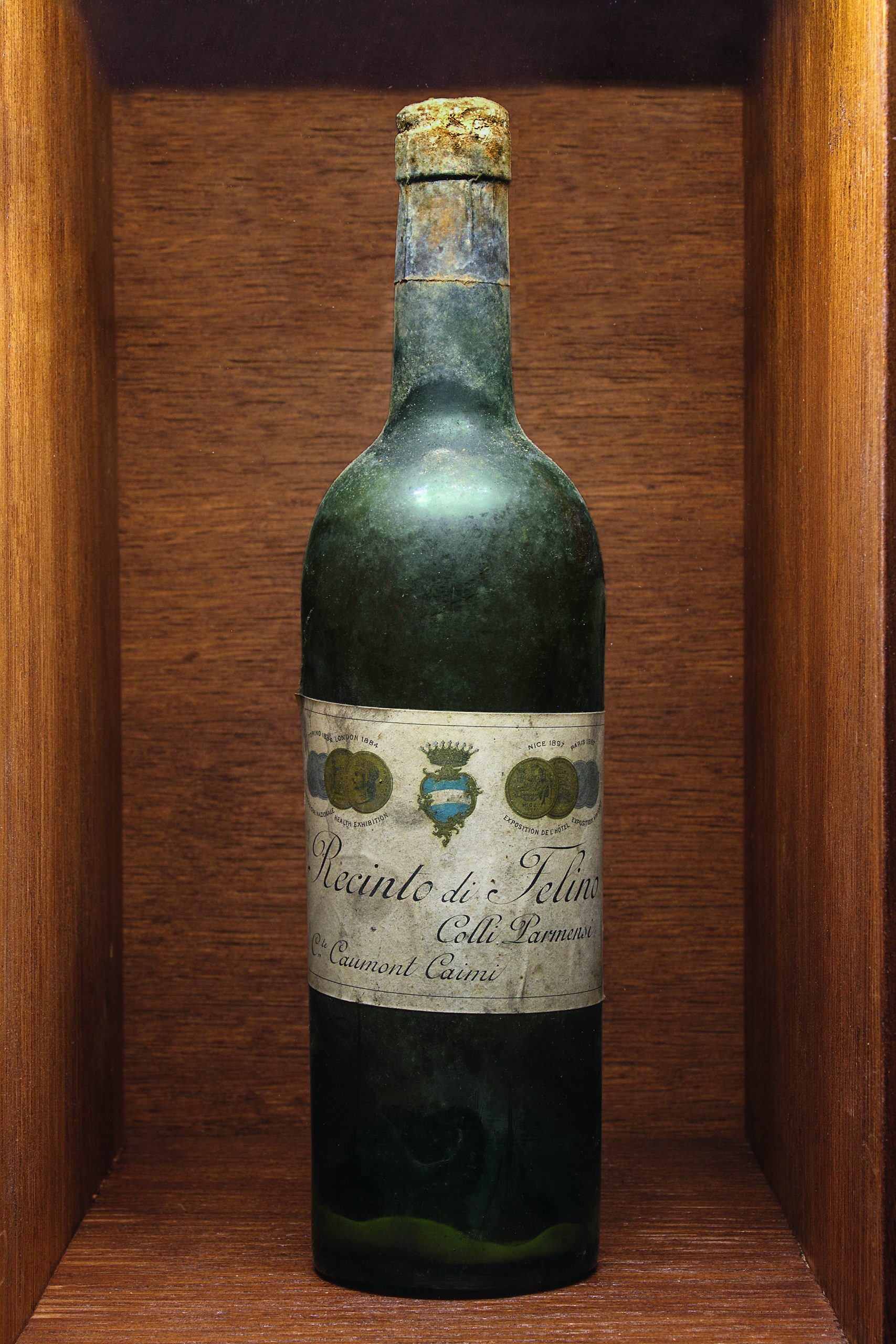
2.Sala Baganza
The town square is dominated by the Rocca Sanvitale. (44.713093, 10.227264). Built in the XV century by the Sanvitale Counts, it was a hunting lodge of the Farnese family, later of the Bourbons and the summer residence of the Duchess Maria Luigia of Austria, and preserves valuable frescoes with a mythological theme, which can be visited by the public.
The Wine Museum is located in the cellars and in the historic icebox, and is a particularly complete exhibition itinerary on the history of viticulture in the Parma area from its dawn to the present day. Every year the Municipality of Sala Baganza announces a competition to take place at the Rocca for the best sparkling Malvasia. The winner is awarded the “Cosèta d’Or” prize. La Cosèta is the dialectal name of the small carved wooden bowl in which wine was once served in taverns.
2.a.
Sala Baganza is also known for a particular historical event: the stay of a few days of Giuseppe Garibaldi, hero of two worlds, guest of the Marquise Trecchi Araldi in the residence located on the hills of Maiatico where Garibaldi fell in love with Malvasia to the point of having several plants sent to him planted on his island of Caprera. At the corner of the square, in Via Garibaldi, (44.713555, 10.227366) you can admire a plaque in memory of this illustrious visit also narrated in a section of the museum.
We continue to the Maiatico localities which together with Castellaro and Talignano are considered the most suitable for the production of Malvasia in Val Baganza.
It is no coincidence that a synonym of Malvasia Odorosissima is also Malvasia of Maiatico.
Here we can see, from outside the property, the famous Garibaldi chestnut tree, at whose feet he loved to sip a glass of Malvasia, at the Villa Trecchi Araldi (today Mutti) in Via Maiatico 32, visit the historic parish church and see the rolling hills the vineyards where the General loved to stroll.
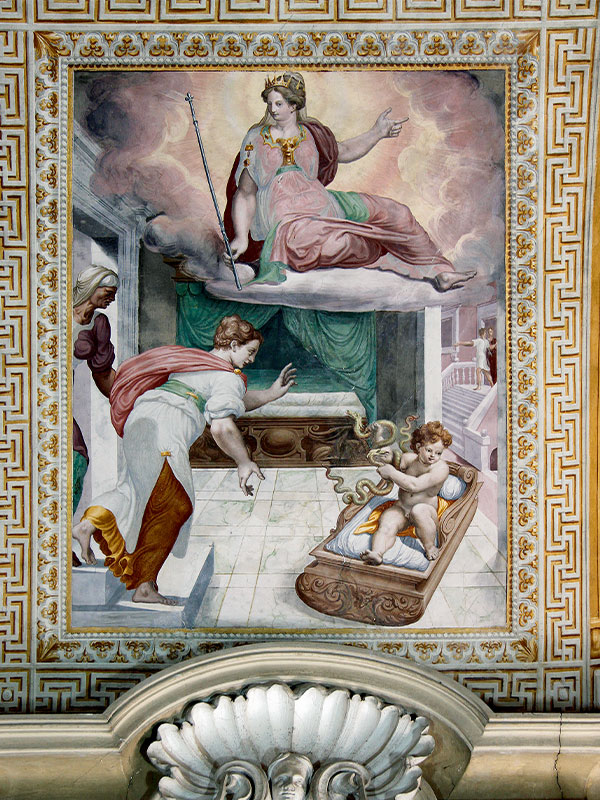
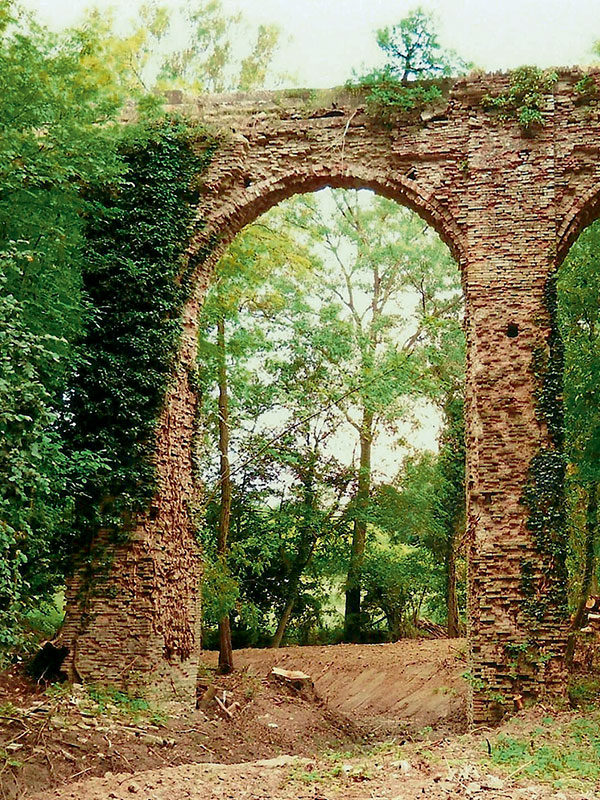
2.b.
From the belvedere, we can admire the natural spectacle of the badlands among the most beautiful in the Emilian Apennines.
Going along Via dei Vignaiuoli, Via Valline on the left and taking Via del Beneficio on the right, we arrive at Località Castellaro.
2.c.
Taking Via Pozzo we find on our right the Aqueduct della Nave, improperly called Roman Bridge, datable to the XV century (44.698725, 10.217922) and the
2.d.
small Oratorio del Santissimo Nome di Maria (Oratory of the Most Holy Name of Mary). The oratory stands on the remains of a XIII century religious building and has been a pilgrimage destination for centuries, but still today it remained in the hearts of the locals. Inside was kept the painting of the Madonna whose frame, unfortunately lost, according to written testimonies, was carved with plant motifs with vine leaves and bunches of grapes.
2.e.
You can stop for a visit to the Azienda Agricola Palazzo, a historic cellar in the area with vineyards located inside the gullies. (tastings) (44.695160, 10.214839).
The cellar produces different types of Malvasia including the raisin version that has won awards on several occasions.
Through Via San Vitale you enter the narrowest part of the valley and arrive at:
2.f
San Vitale Baganza, a suggestive town with a medieval urban plan, where you can admire the vast Malvasia vineyards on the slopes of the church (bearing a curious bas-relief depicting two peasants carrying a bigoncio (basket) with a pole (perhaps full of grapes?).
Other wineries present:
- Ariola Vini e Vigne, (44.675556, 10.274849).
- Azienda Agricola Salati Egidio.
- Fratelli Scartazza Agricultural Company (44.666784, 10.189206).
- Azienda Agricola Vigneti Calzetti, production site, (44.667295, 10.192809) whose vineyards are located in Talignano within the regional park of the "Boschi di Carrega".
We continue on Strada Neviano de' Rossi in the direction of Fornovo di Taro where the itinerary crosses the valleys of the Taro and Ceno rivers.
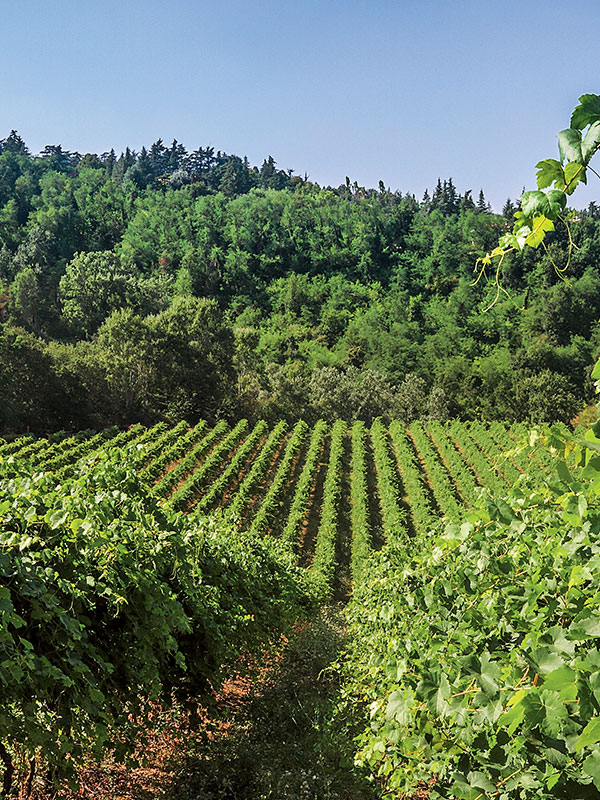
Along the road we meet Roncolungo di Sivizzano where we recommend a stop to observe from the road:
3.a.
The remains of a farm where wine production is documented, located along the road that the Romans traveled to reach the Apennine pass of Valoria (now Passo della Cisa) and then descend from the port of Luni from which they sent the wine to Rome.
Once in Fornovo and having crossed the Taro River we head towards the village of Varano de' Melegari. We recommend a the visit to:
3.b.
Castle of Varano (44.688101, 10.007180). Its origin is prior to the year 1000, the only certain date of its existence is a document dated 1087 in which Umberto Pallavicino received it as inheritance. Built to defend the valley and with an impregnable structure, today it is possible to visit it only with guided tours.
3.c.
Stop at the Podere Pradarolo farm (44.682610, 9.964101).
The vineyards employ organic cultivation methods and the wines from Malvasia grapes are produced with long maceration of the skins (orange wine) (https://www.poderepradarolo.com/, tastings, farmhouse tourism, rooms).
Return to Fornovo di Taro and continue for:
4.Ozzano Taro
Ozzano Taro, another very important area for the production of Malvasia whose winemaking vocation has been known since the Middle Ages. Along the way we recommend a stop at
4.a.
“Guatelli” Museum, which exhibits the extraordinary collection, desired and organized in artistic forms by the master Ettore Guatelli, of a large quantity of agricultural objects and tools and testimonies of farming culture.

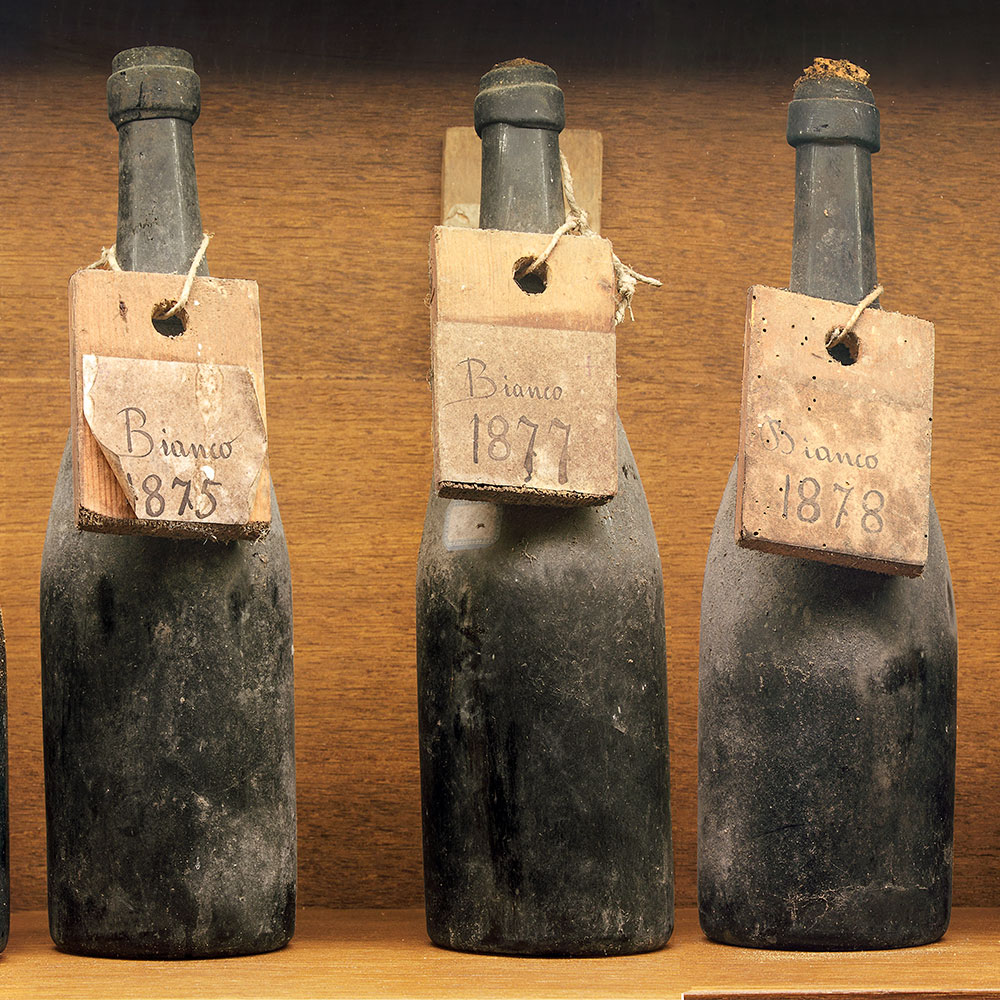
Turning right into Strada Torrigiani and Strada Monticello we arrive at:
4.b.
Monte delle Vigne winery (tastings, farm house tourism, rooms) (44.699677, 10.146690). It takes its name from the locality, famous since the XIII century for the wines that came from here. The cellar converted to organic farming is a true naturalistic ecosystem. The estate is not made up only of vineyards but there is also the presence of lakes and woods. It is precisely on these hills that the historic Basetti family in the XIX century owned the vineyards with which grapes they produced renowned wines. Some original bottles from the XIX century are exhibited at the Wine Museum.
Near the town of Pontescodogna we recommend a visit to the:
4.c.
Corte di Giarola in Strada Giarola 11 (44.741378, 10.174699) for a visit to the Tomato Museum and to the Pasta Museum of the Food Museums of Parma circuit.
The Court of Giarola has medieval origins and was born as a defensive garrison of the ford on the Taro river which connected it to the Via Francigena. It was donated to the Monastery of San Poalo which transformed it into an agricultural courtyard. Over the centuries the owners changed but the agricultural use remained until the mid XX century, when the main production of the adjoining land was tomatoes. These were processed in a factory built close to the large courtyard and then abandoned. The Court is currently owned by the Taro Regional River Park Authority.
The Tomato Museum offers the visitor the opportunity to immerse themselves in the entire production chain linked to the product, starting from the illustration of the botanical varieties, production areas up to the production techniques with the possibility of admiring vintage machines.
The Pasta Museum exhibits the oldest sample of spaghetti known today (1837) and an entire historic pasta factory from 1850.
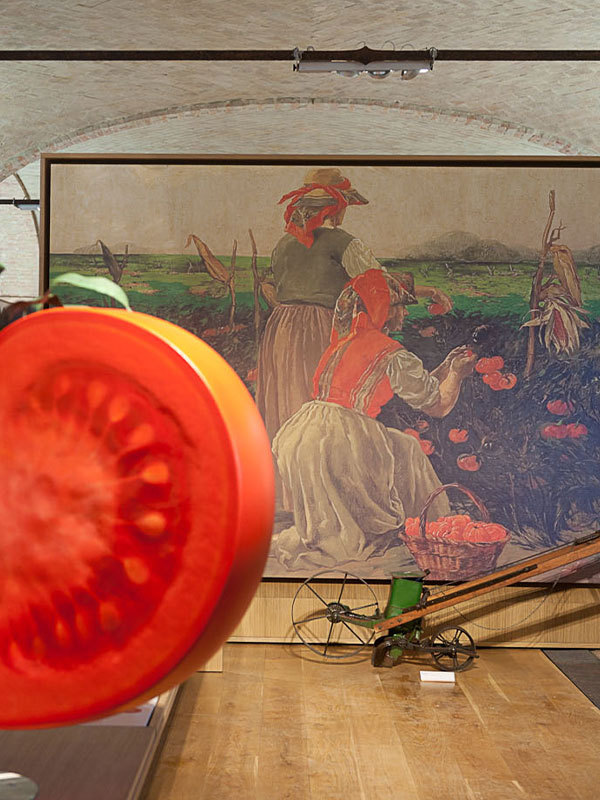
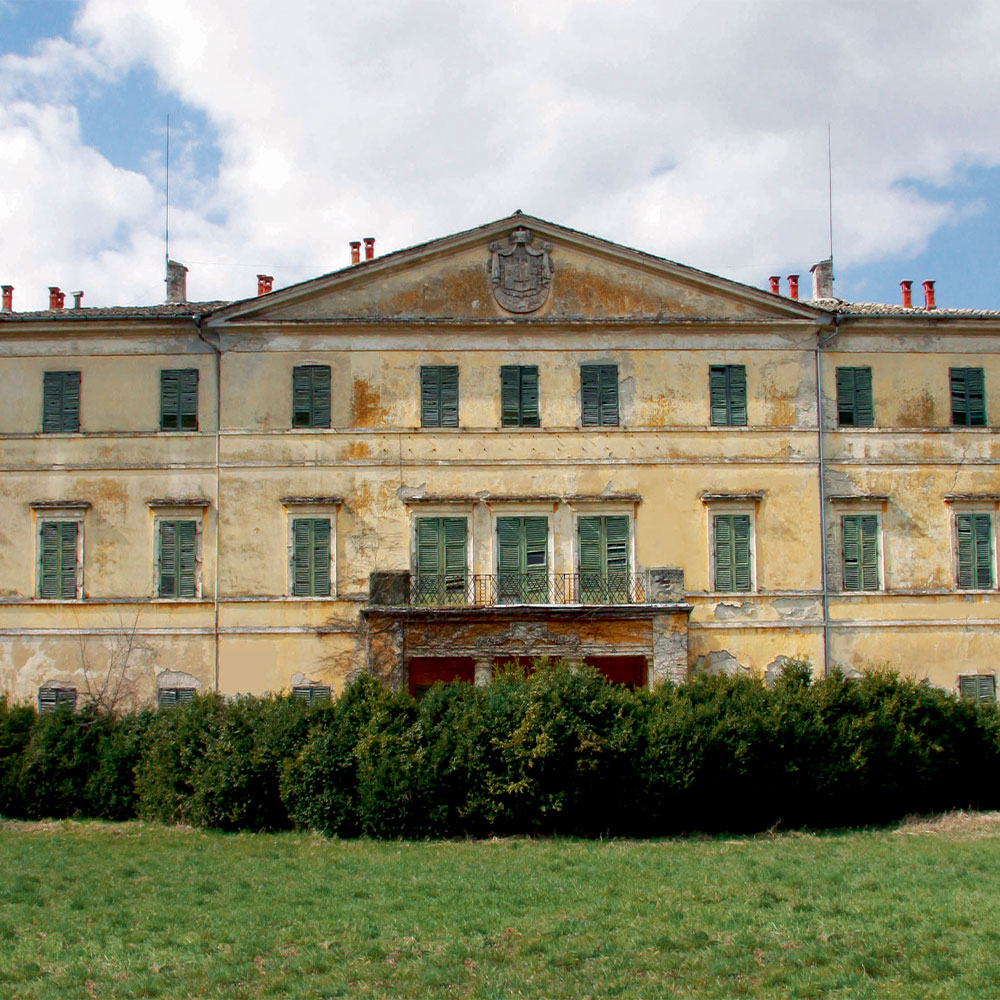
Back on the Via Spezia we can take a detour to Talignano, a small town with a lot of history. A landmark is the:
4.d.
Pieve (church) built by Cistercian monks in the XII century and dedicated to San Biagio (44.721852, 10.189593) which was of great importance because it was located along the Via Francigena and a stopping point for pilgrims. The Pieve has remained in the hearts of travelers who love Malvasia up to the present day thanks to the figure of Don Ferruccio Botti (1935-2008) who, in addition to overseeing the restoration of the church, was a local food and wine enthusiast, to which under the pseudonym of Mastro Prosciutto (Master Ham) he devoted several books, today considered true milestones on the subject. Although he was not a drinker, he cultivated a small vineyard near the church from which he obtained a Malvasia wine (which he used for Mass) which he submitted to the judgment of his friend Luigi Veronelli who was able to praise his Malvasia of Maiatico with various reviews in the newspapers for which he wrote.
We now continue towards the:
4.e.
Boschi di Carrega Park, a very important area both from a naturalistic and historical point of view. (44.739840, 10.205622) Protected over the centuries as a hunting reserve, first by the Sanvitales, then by the Farnese and the Bourbons, Dukes of Parma, it passed ownership to the Savoy and today bears the name of the last owners. From a naturalistic point of view, in the park we can find a wide variety of exotic tree species, such as cedars, firs, beeches, and several lakes.
An important imprint to the Wood was given by the works commissioned in the XIX century by the Duchess Maria Luigia, who had a hunting lodge with an English style park built inside.
Maria Luigia’s vineyard, was located where today the “Casa Rossa” (red house) stands. It was a sort of vineyard garden where all the most popular varieties of that time were present, including Malvasia.
Still within the Woods in the locality of Conventino, we find the vineyards of the Calzetti winery, a site that can only be reached on foot by non-residents.
The Malvasia produced by the previous owner, Adolfo Longhi, won the gold and silver medal in 1926 at the Esposizione Campionaria (exhibition) held in Rome. He was a point of reference for the winemakers of the time.
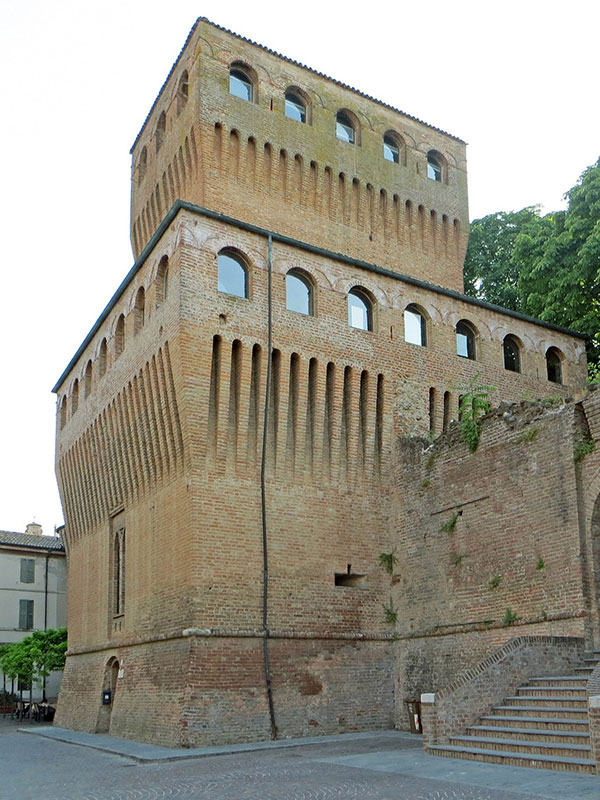
5.Noceto
The itinerary, after crossing the Taro river on the bridge at Collecchio, continues towards Noceto. The town center is dominated by:
5.a.
Rocca, built in the thirteenth century by Oberto Pallavicino and after various vicissitudes rebuilt by the Sanvitale Counts who kept it until 1805. Today owned by the municipality, it houses the "Castello della Musica", a valuable museum which houses important record collections and musical instruments of violin making.
Also in Noceto in Via Silone 1 is the:
5.b.
The “Museo della vasca votiva Nux” (44.809964, 10.183133) is a large wooden tank from the Bronze Age (unique in its kind) in which the populations of the Terramare culture placed objects of various kinds including ploughs, pottery, terracotta animal figurines, and which bears witness to the ancient agricultural techniques used in the area.
Other wineries along the itinerary:
- La Caslen'na Agricultural Company, (44.701607, 10.142606).
- Tenute Venturini Foschi, (44.758617, 10.052470).
